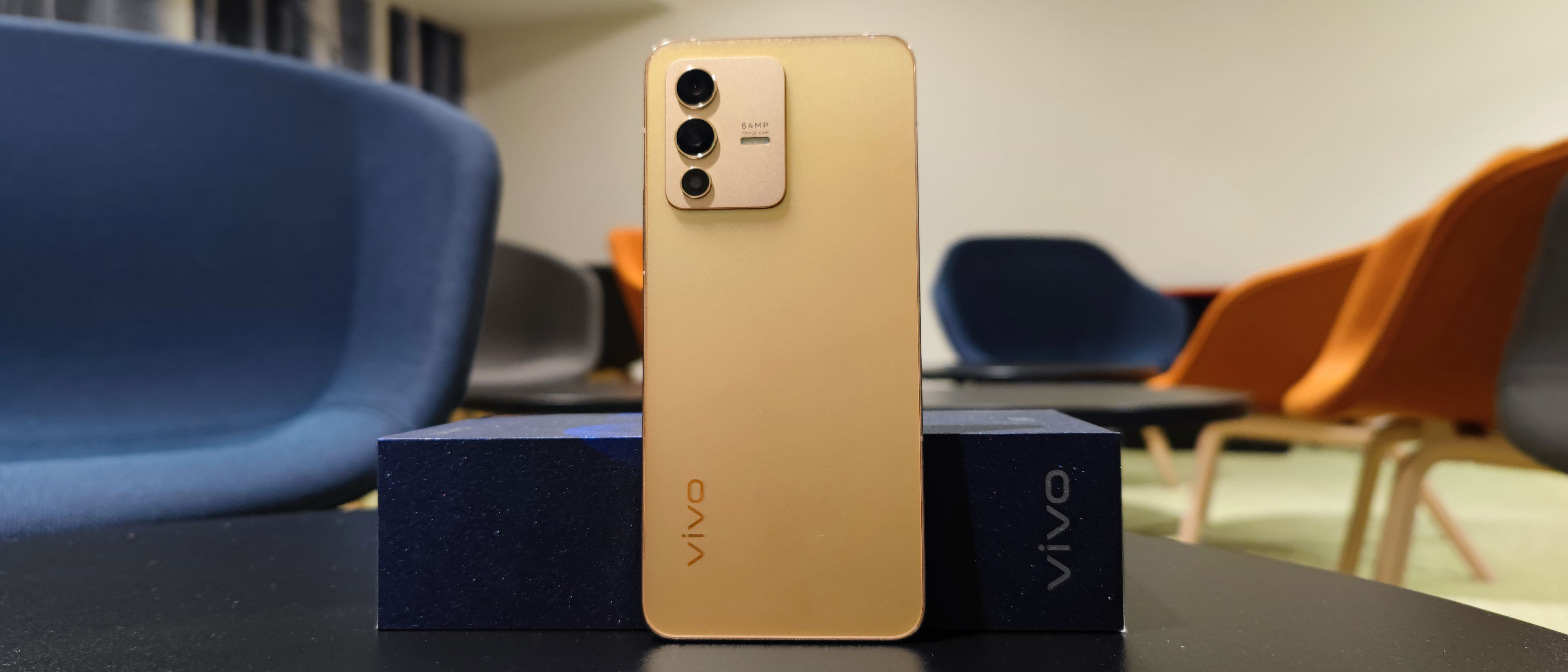Early Verdict
What we’ve seen of the Vivo V23 so far is impressive, especially its selfie capabilities and design. However, there are a few question marks surrounding its specs, like the processor – which we haven’t seen in a mainstream phone yet – that we’ll need to examine thoroughly in our full review.
Pros
- +
Beautiful design
- +
Capable selfie cameras
Cons
- -
A little uncomfortable to hold
- -
Its processor remains untested
Why you can trust TechRadar
Launched at the annual tech conference CES 2022 alongside a Pro sibling, the Vivo V23 is the latest mid-range phone from up-and-coming Chinese brand Vivo. Well, we say ‘mid-range’ because its specs point that way, but we don’t actually know a price yet.
Our first impressions of the Vivo V23 were very positive. Taking the handset out the box revealed one of the best-looking smartphones we’ve ever seen. (We tested the gold model which boasts an eye-catching sparkly design.) Things only got better when booting up the phone, testing its cameras and browsing the menus.
Vivo is positioning the V23 as a competitive smartphone for selfie fans, as it has two front-facing snappers, including a super-high-res one, and loads of software features that improve self-portraits.
Since we don’t have the Vivo V23’s price, we can’t fully assess how good it is just yet - and we don’t know when you’ll be able to buy it anyway - but we’ve had some hands-on time with the device and you can find out about it here.
Vivo V23 price and availability
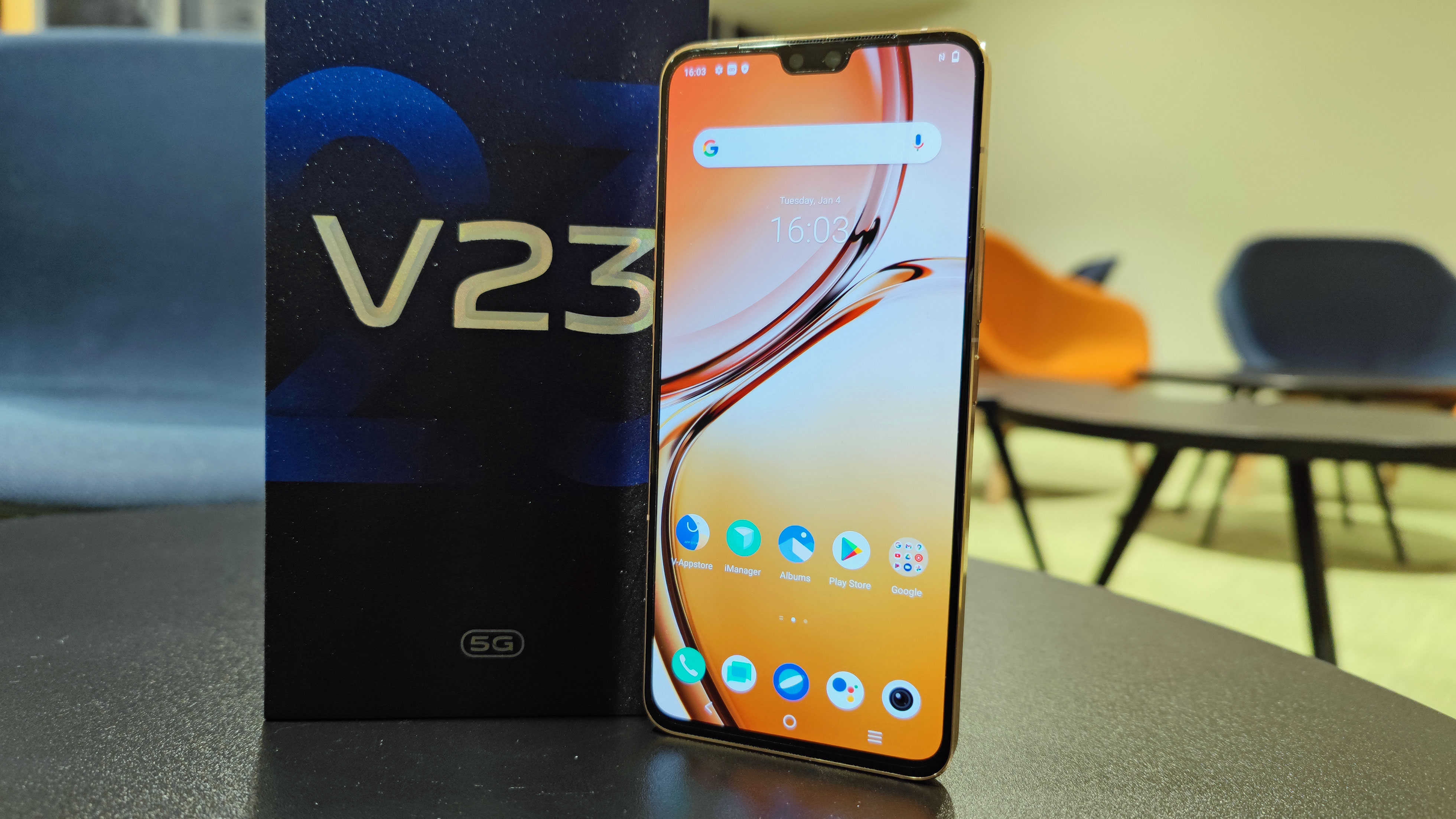
As mentioned, we don’t know the Vivo V23’s price but it and the V23 Pro, which has a higher-res main camera, curved-edge display and improved processor, both seem like mid-range phones judging by their specs and design.
We’d therefore expect both to sit around $600 / £500 / AU$800, obviously with the V23 being cheaper than the Pro. That’s a guess, though, and we might be proven wrong.
The phone is available now from certain southeast Asian countries, and we’ve been told it’ll come to Europe and more Asian and Australasian regions in the coming months.
Design and display
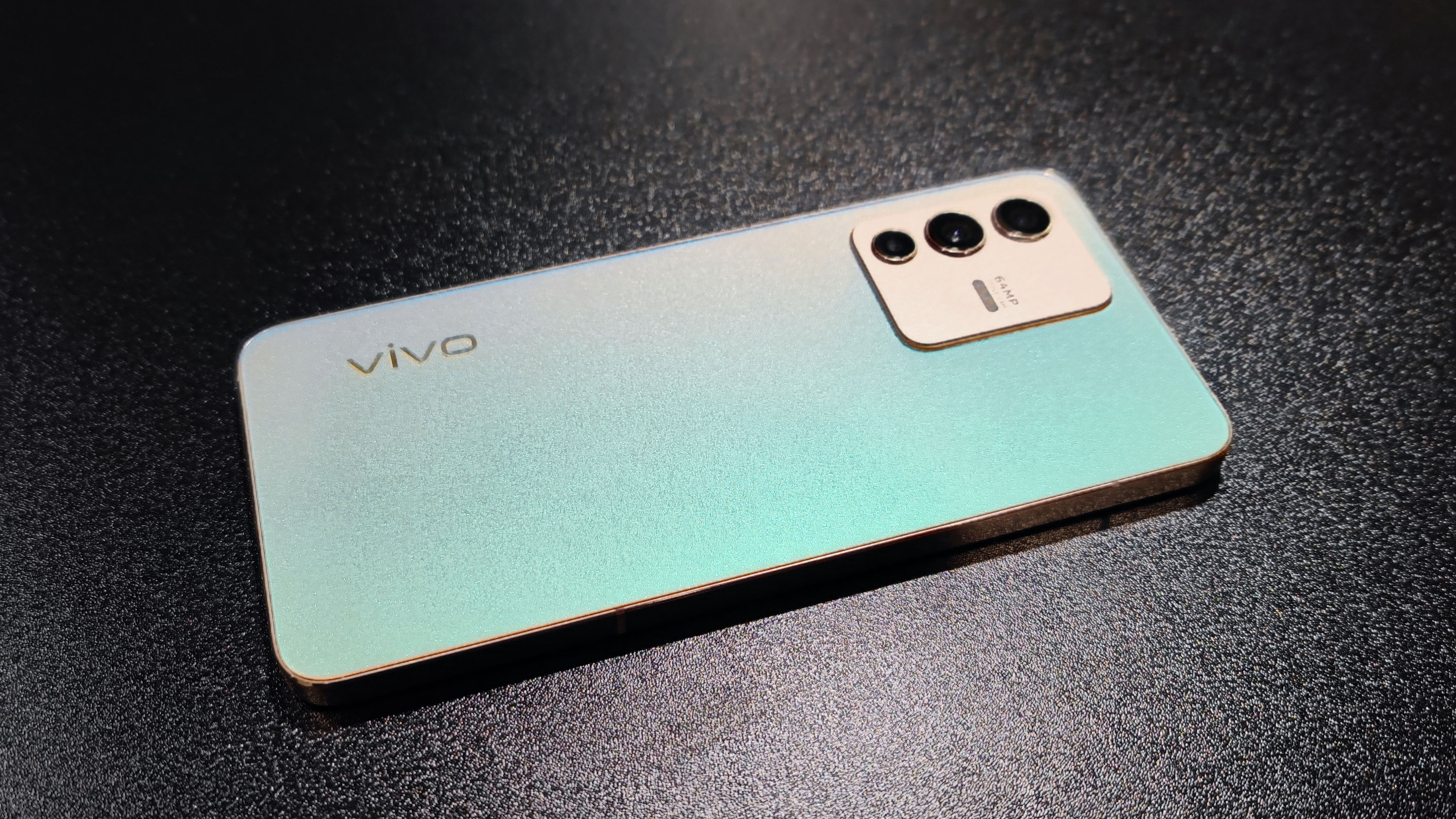
In a world of countless boring, similar-looking smartphones, the Vivo V23 really stands out - well, the gold one we tested does. There’s a black version too which, from images, looks a little less stunning.
The gold model has a sparkling textured look that really does seem to glisten. When it catches the light just right, the gold turns to blue.We’ll try to show this in the photographs of the phone, but it’s most obvious in person.
Another intriguing design choice is that the Vivo V23 has flat edges, like modern iPhones. We’re not too keen on this feature though, as it means the device doesn’t sit in the hand as comfortably. We’ll have to see if it grows on us over our testing period, or if blisters grow on us instead.
It’s a fairly light phone, weighing just 179g. There’s a USB-C port but no 3.5mm headphone jack. The power button and volume rocker are both on the right edge.
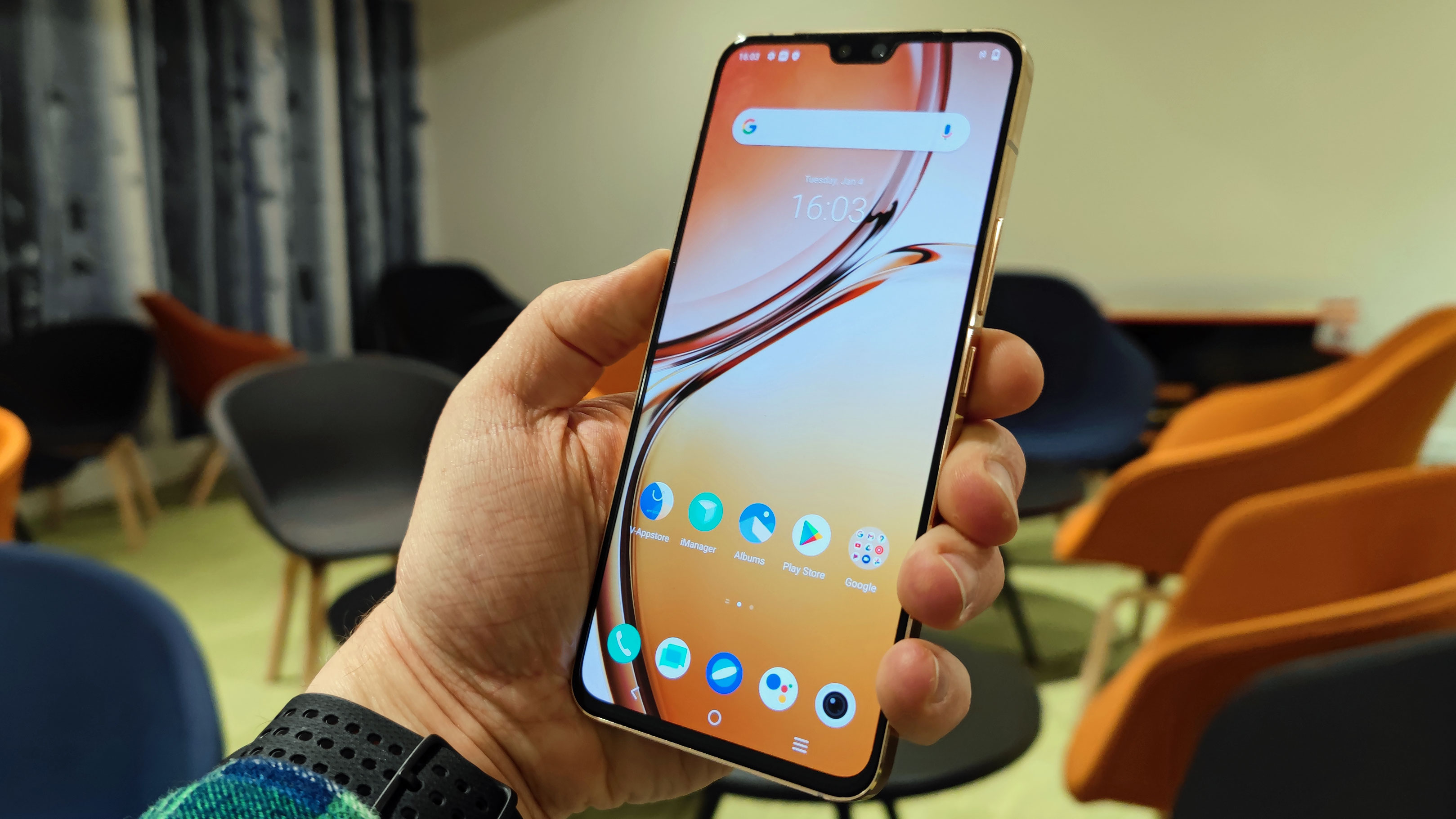
The screen is 6.44 inches across, with a 1080 x 2400 resolution and 90Hz refresh rate. It uses AMOLED tech, and it shows, as colors look vibrant. We weren’t provided with a figure for max brightness, but from our testing, it gets pretty bright.
An intriguing display design feature is the notch that houses both front-facing cameras. Outside the Apple realm, notches generally aren’t used much in smartphones, even for multiple selfie cameras (companies like Moto and Huawei used dual punch-holes or lozenge-shaped larger holes for multiple snappers instead).
This doesn’t interrupt the screen too much, but it could get in the way when watching content from streaming services a little. Balancing the scales is the fact that, around the display, the bezel is incredibly thin, so the body-to-screen percentage is very high.
Cameras and battery life
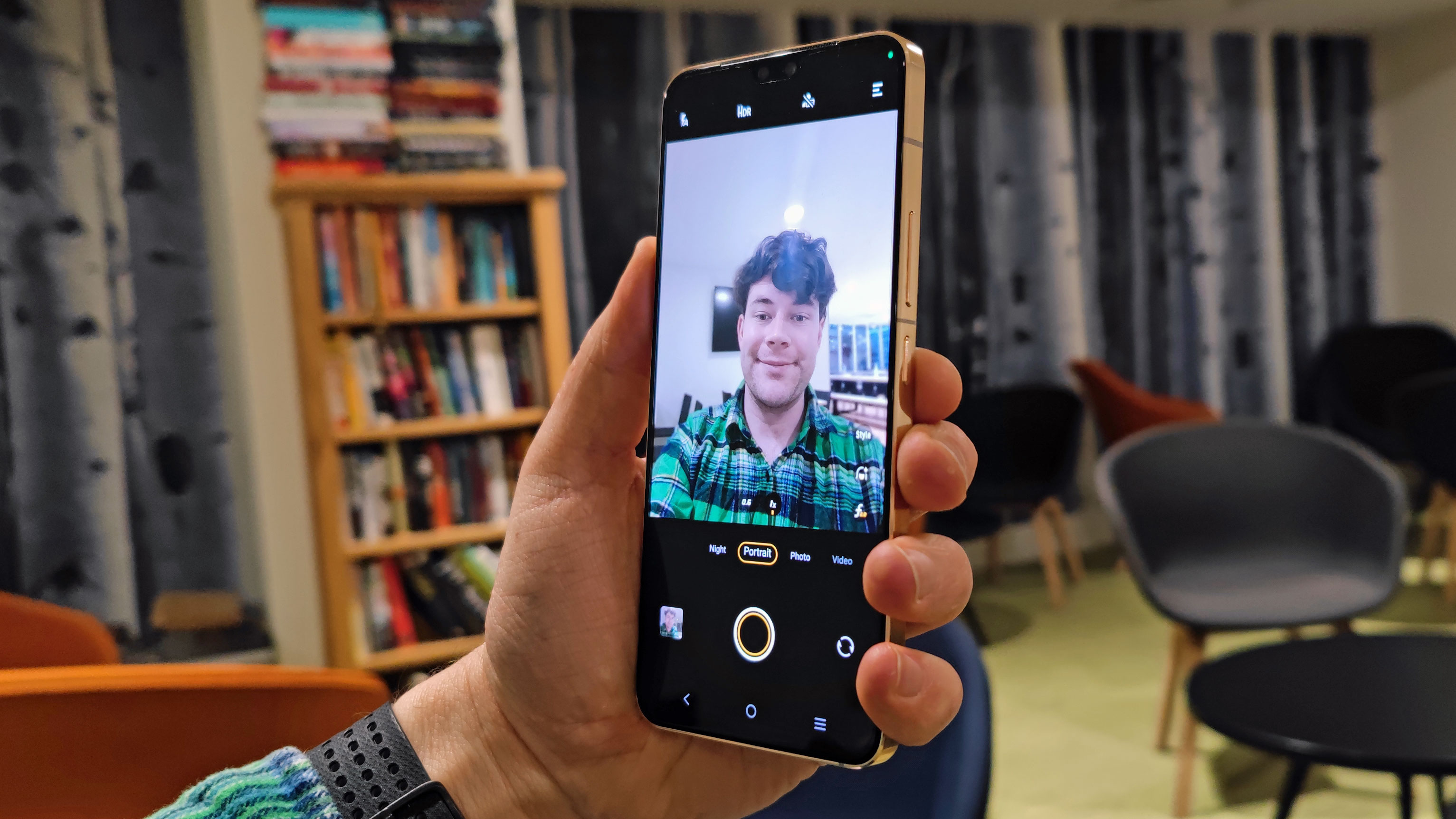
Onto the Vivo V23’s main selling point: its selfie cameras. There’s a 50MP main camera and 8MP ultra-wide camera for wider field-of-view shots. If you’re surprised by how high-res that main camera is, you’re not alone. It’s technically not the highest-resolution selfie camera, as the Moto Edge X30 has a 60MP one, but since most phones top out at 32MP for front-facers, it’s a great spec.
That means you can take high-resolution selfies and edit them down in an app, or use pixel binning (which combines camera pixels) to take bright-looking lower-res snaps.
The included software also helps with selfies. We found Portrait mode offered more customization over specific facial features than we normally see - there were makeup settings, face beautification, selfie ‘styles’ (such as filters, shadow effects and color grades), and more. In addition, 4K selfie video recording lets you take high-res videos of your face.
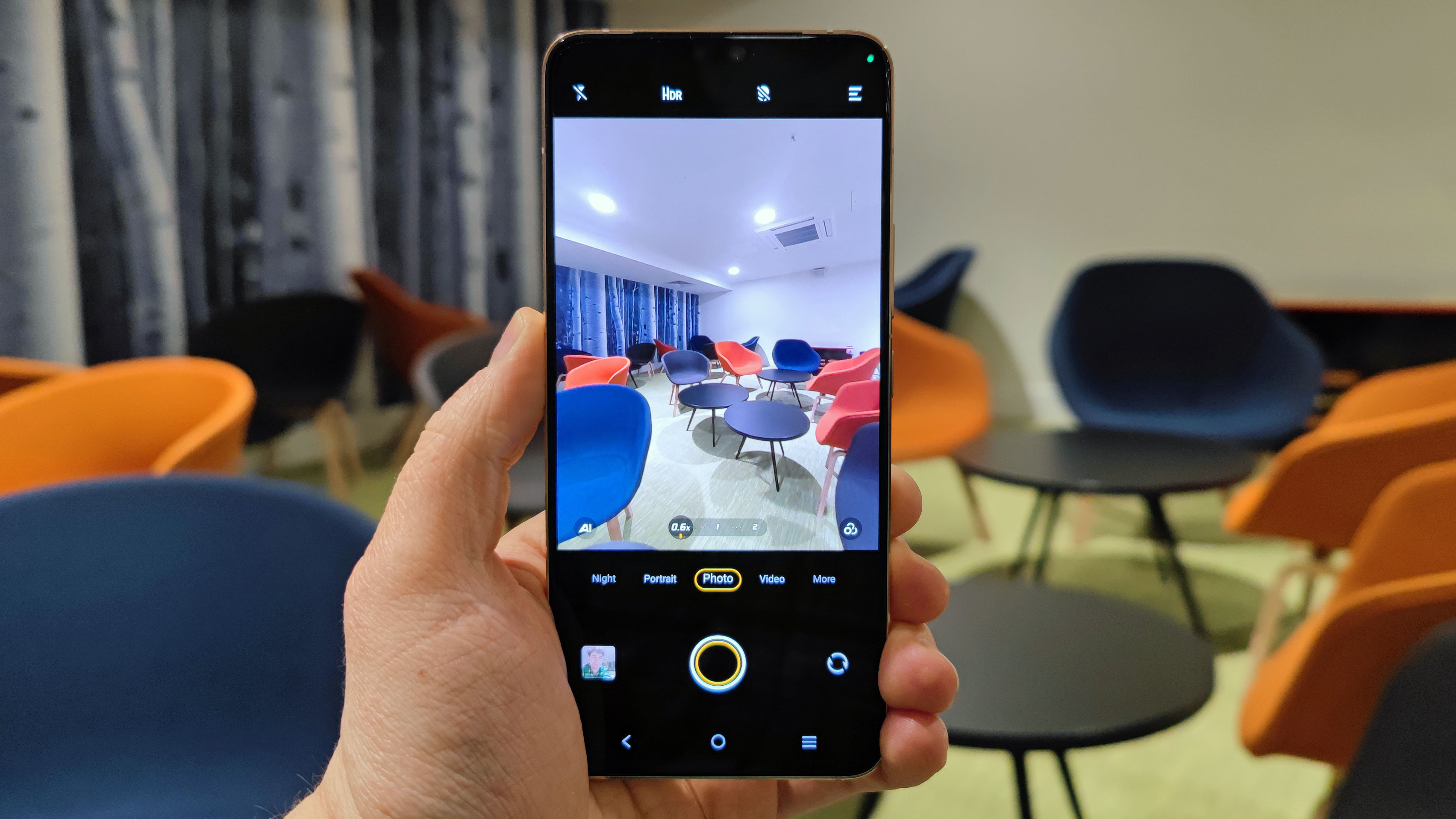
We had fun playing around with the selfie modes and settings for the purposes of this hands-on review, but we’ll have to conduct a far more scientific set of tests for our full review.
On the back of the phone, there’s a 64MP main, 8MP ultra-wide and 2MP macro camera. In all honesty, we got distracted by the selfie modes and didn’t test these out much. Lots of the Portrait mode features for selfies are present in the rear cameras too though.
The Vivo V23 battery capacity is 4,200mAh. This is a little on the small side for a phone with a display this big, but it’s not a big concern - we hope. Stay tuned for our full review to see if we’re right about this.
The charging speed is 44W, which is a decent mid-way speed. Fast-charging phones can hit 65W while slow-charging handsets (looking at you iPhone and Galaxy) usually sit around 25W. Vivo states that 30 minutes of charging will get the phone to 68%, and we’d imagine it’ll charge fully in about an hour (phones charge slower as they get nearer 100%).
Performance, specs and software
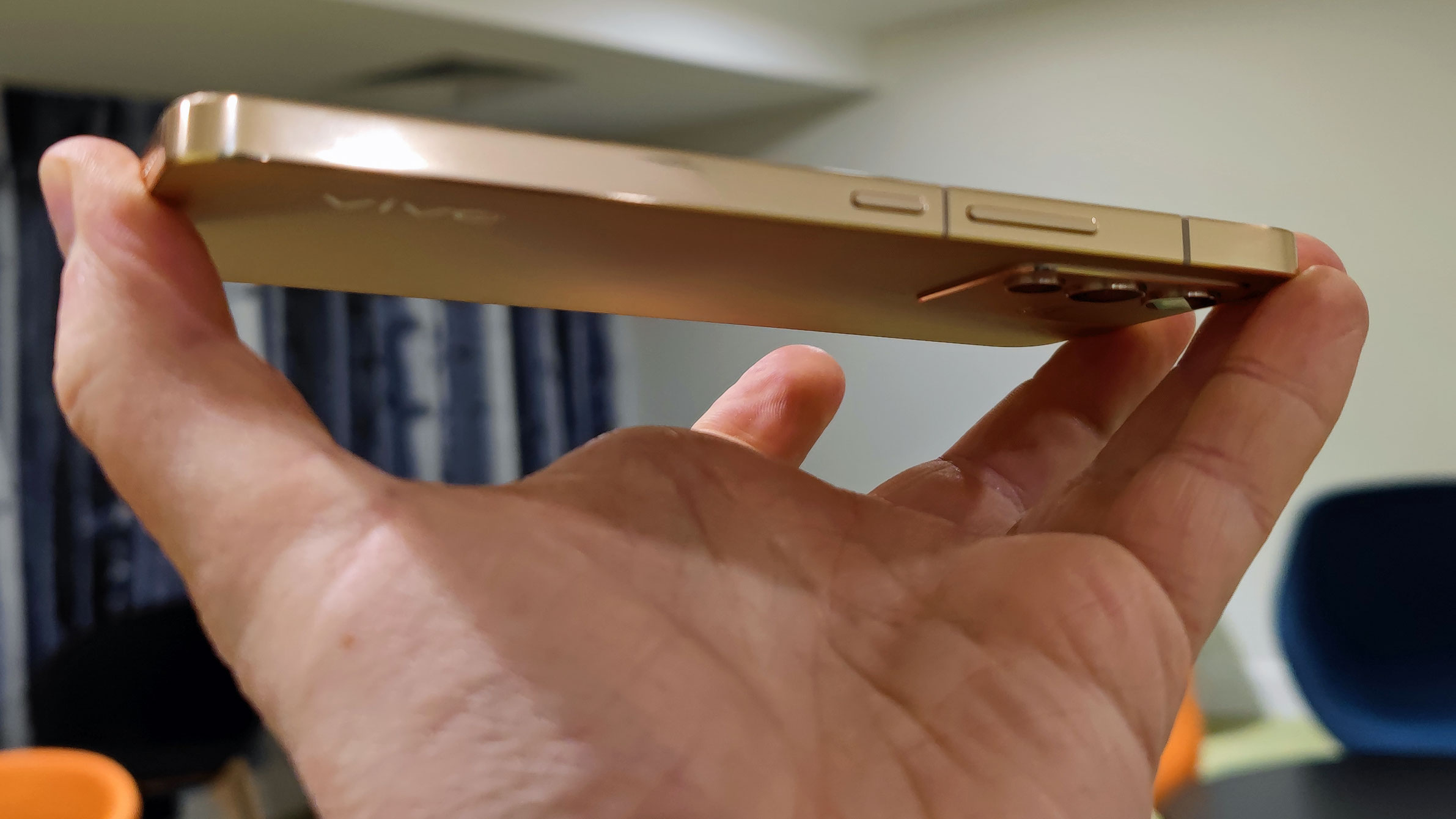
The Vivo V23 uses the Dimensity 920 chipset, which hasn’t actually been used in any globally launched phones, but it’s a mid-range processor. That’s paired with 8GB RAM and 128GB storage or 12GB RAM and 256GB storage - our review unit was the latter.
We didn’t test the phone for gaming - we’re in the middle of CES, as if there’s time for that! - but it felt snappy when navigating the menus and fiddling with the camera app features.
The operating system is Android 12, with Vivo’s FunTouch OS 12 laid over the top. This looks like your standard Chinese-phone-brand user interface, with bright and bold colors. There were quite a few apps on the menu when we booted the phone up, but the majority seem to be actual phone tools as opposed to bloatware third-party apps we sometimes seen on custom user interfaces.
This is a 5G phone - some of the marketing material we’ve seen calls it the Vivo V23 5G - so you can use it to connect to fast data connections.
Early verdict

We got caught up in the glitz and glamor of the Vivo V23, and spent lots of our testing period marveling at its lovely design and taking numerous selfies. In these two areas, we can give the phone hearty thumbs-ups.
But we still need to test many other areas, like the battery life, rear cameras and processing performance, before we pass a definitive verdict on the phone.
In particular, we’ll also need to have a price before we publish our full review, so we can evaluate its value for money. As it stands, though, this may be our favorite smartphone launched at CES 2022.

Tom Bedford joined TechRadar in early 2019 as a staff writer, and left the team as deputy phones editor in late 2022 to work for entertainment site (and TR sister-site) What To Watch. He continues to contribute on a freelance basis for several sections including phones, audio and fitness.
What is a hands on review?
Hands on reviews' are a journalist's first impressions of a piece of kit based on spending some time with it. It may be just a few moments, or a few hours. The important thing is we have been able to play with it ourselves and can give you some sense of what it's like to use, even if it's only an embryonic view. For more information, see TechRadar's Reviews Guarantee.
